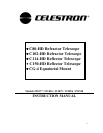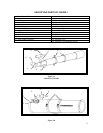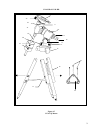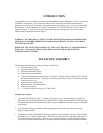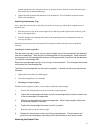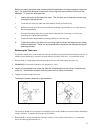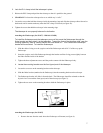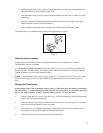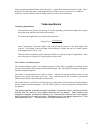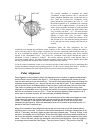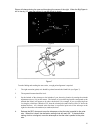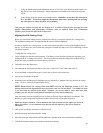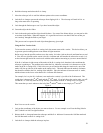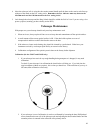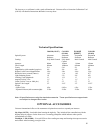
9
Image orientation through the finder will be inverted (i.e., upside down and backwards left-to-right). This is
normal for any finderscope that is used straight-through. Because of this, it may take a few minutes to
familiarize yourself with the directional change each screw makes on the finderscope.
Telescope Basics
Calculating Magnification
The magnification (or power) of a telescope is variable depending upon the focal length of the eyepiece
being used along with the focal length of the telescope.
To calculate the magnification we use the following formula:
Magnification
FL telescope
FL eyepiece
=
()
()
where FL(telescope) is the focal length of the telescope and FL(eyepiece) is the focal length of the
eyepiece. For example, if the focal length of the telescope is 910mm and you use a 20mm eyepiece
your magnification is 910/20 = 46x.
There are numerous optional eyepieces that are available to expand your range of magnification. There
are various types of eyepieces of varying quality to choose from.
The Celestial - Coordinate System.
The celestial-coordinate system is an imaginary projection of the Earth's geographical coordinate system
onto the celestial sphere which seems to turn overhead at night. This celestial grid is complete with equator,
latitudes, longitudes and poles.
The Earth is in constant motion as it rotates on its axis. Actually the celestial-coordinate system is being
displaced very slowly with respect to the stars. This is called precession and is caused by gravitational
influences from the Sun, Moon and other celestial bodies.
The celestial equator is a full 360º circle bisecting the celestial sphere into the northern celestial hemisphere
and the southern celestial hemisphere. Like the Earth's equator, it is the prime parallel of latitude and is
designated 0º.
The celestial parallels of latitude are called "coordinates of declination (Dec.)", and like the Earth's
latitudes they are named for their angular distances from the equator. These distances are
measured in degrees, minutes and seconds of arc. There are 60 minutes of arc in each degree,
and 60 seconds of arc in each arc minute. Declinations north of the celestial equator are "+" and
declinations south are "-". The north pole is +90 and the south pole is -90 .



